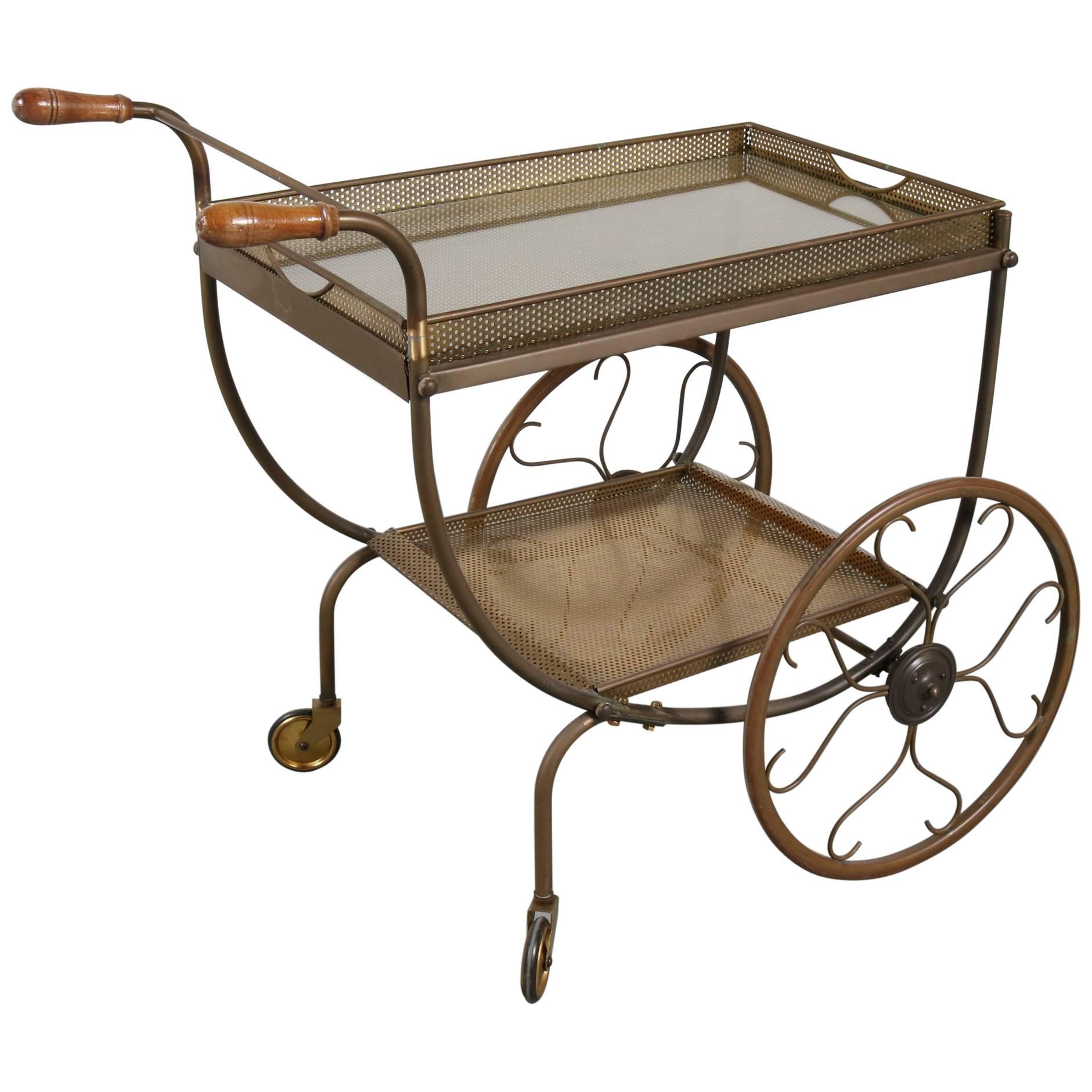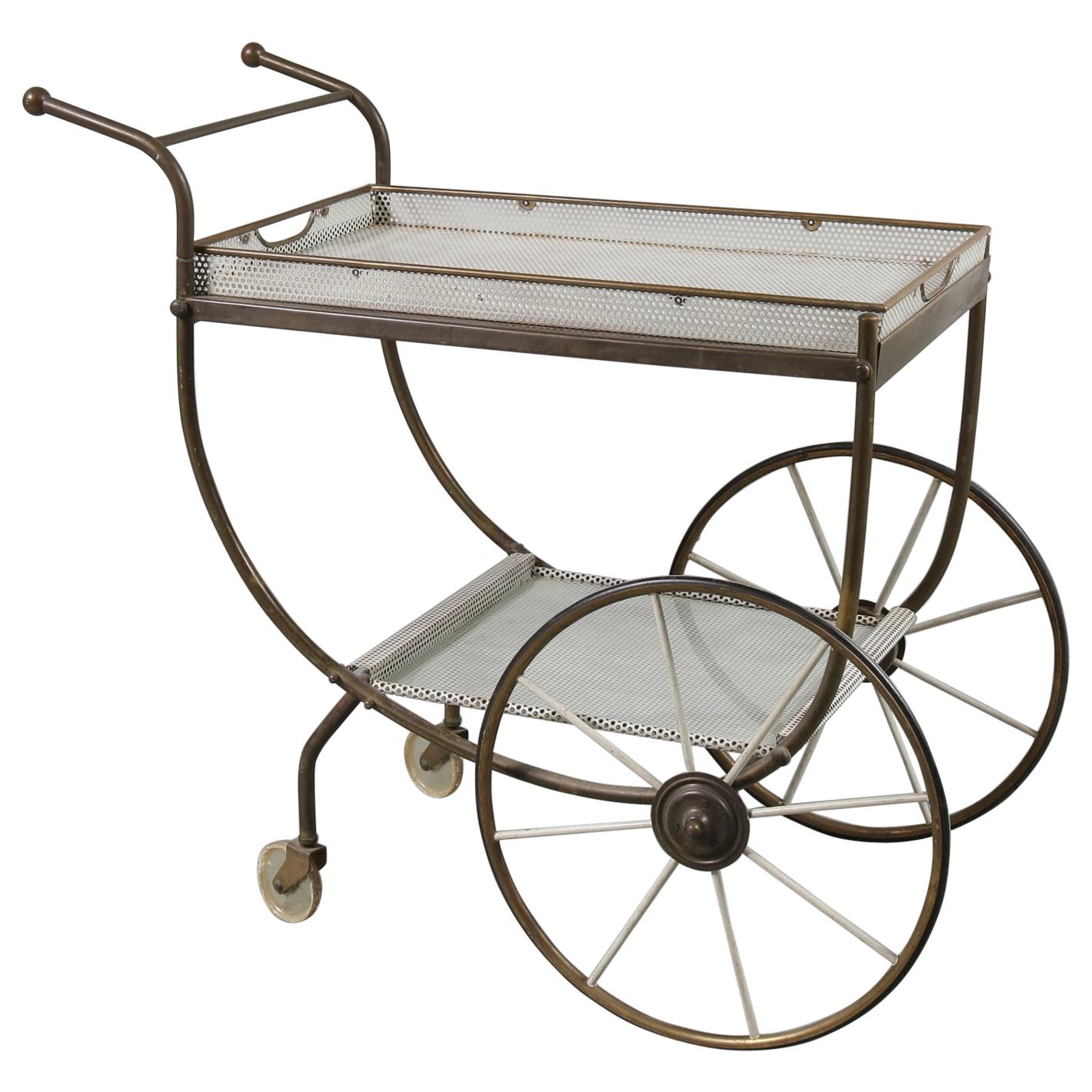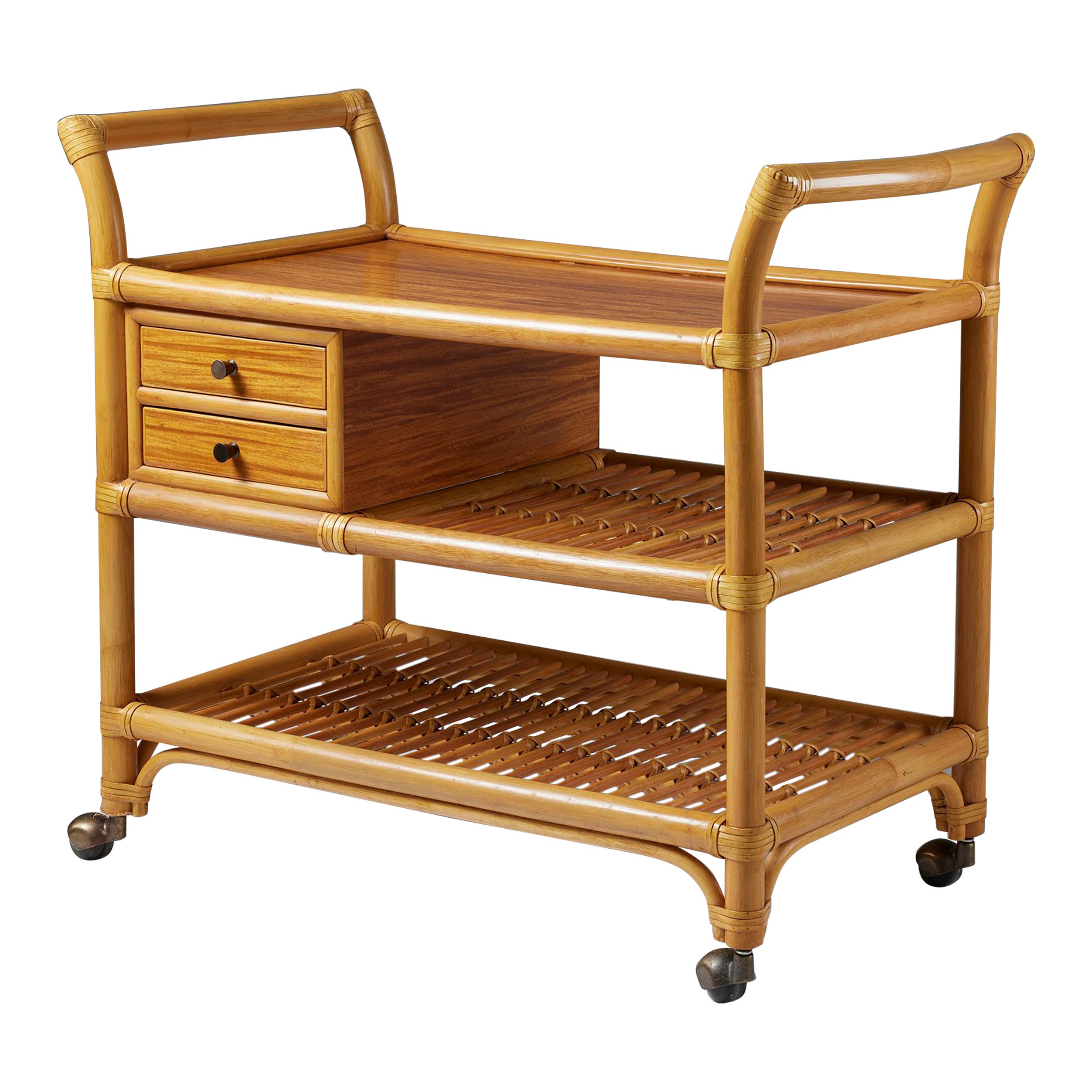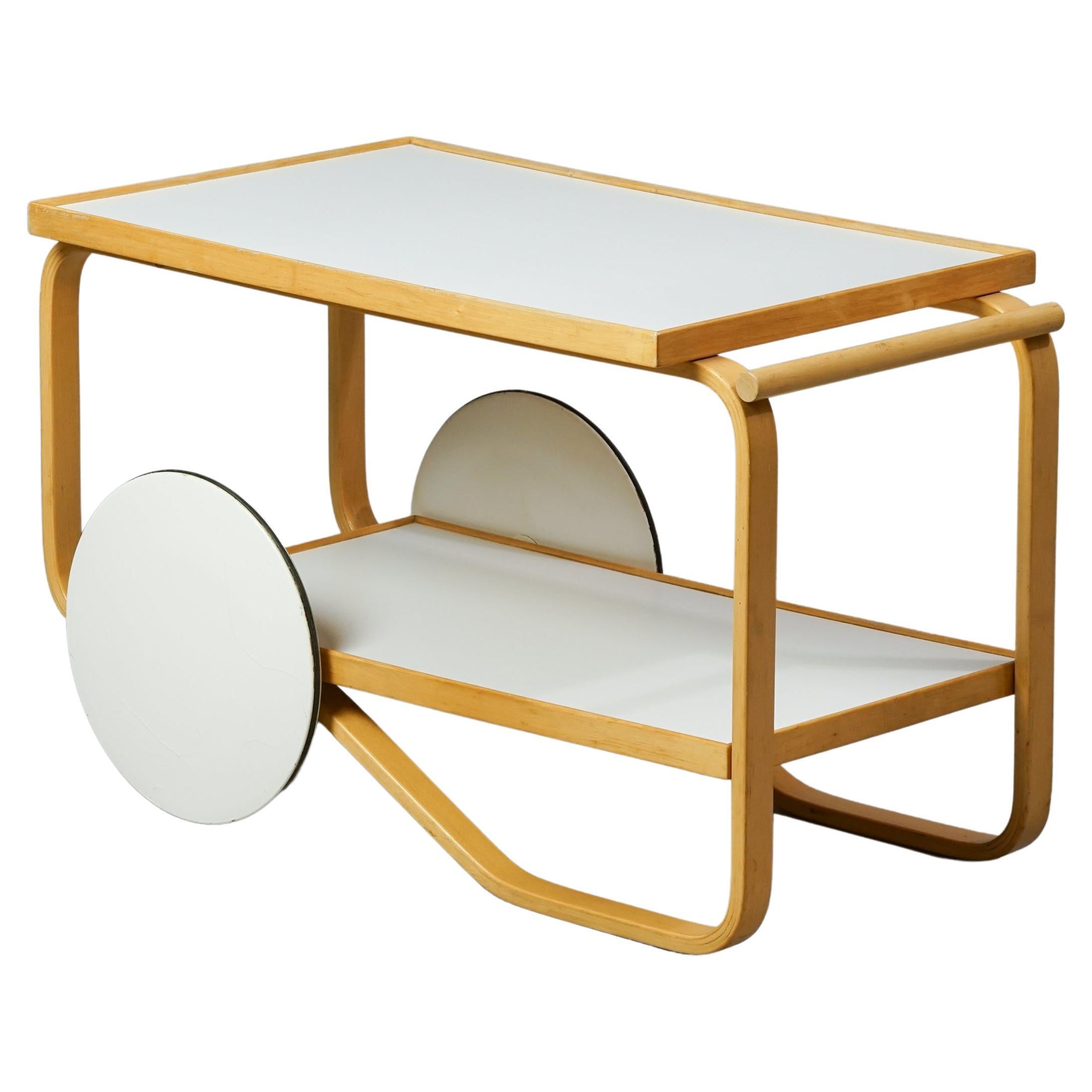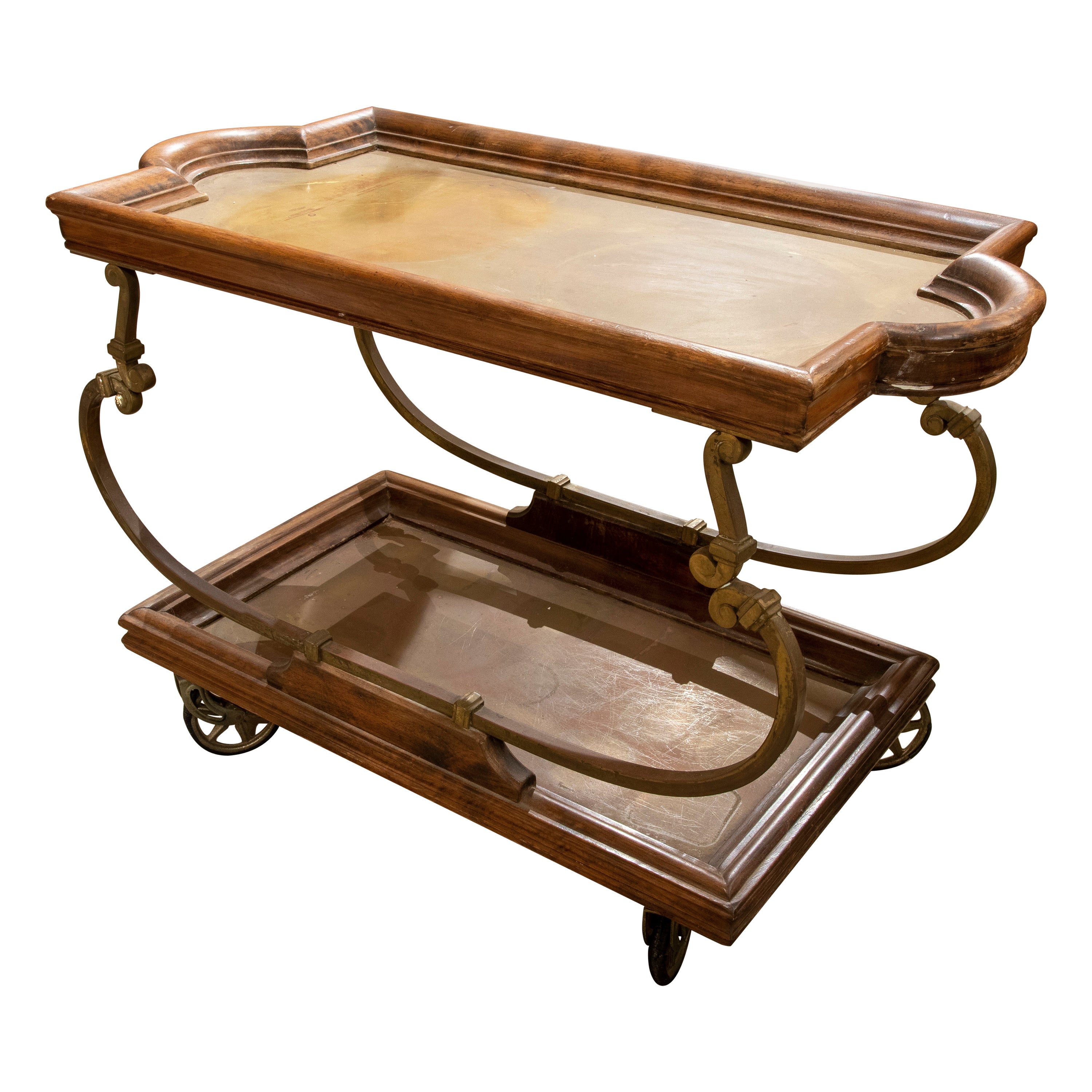Items Similar to Tea Trolley, Anonymous, for Svenskt Tenn, Sweden, 1950s
Want more images or videos?
Request additional images or videos from the seller
1 of 12
Tea Trolley, Anonymous, for Svenskt Tenn, Sweden, 1950s
About the Item
Tea trolley, anonymous, for Svenskt Tenn,
Sweden, 1950s.
Metal.
Dimensions:
H: 63 cm / 2 3/4''
W: 76 cm / 2' 6''
D: 43 cm / 17''.
- Dimensions:Height: 24.81 in (63 cm)Width: 29.93 in (76 cm)Depth: 16.93 in (43 cm)
- Style:Mid-Century Modern (Of the Period)
- Materials and Techniques:
- Place of Origin:
- Period:
- Date of Manufacture:1950s
- Condition:
- Seller Location:Stockholm, SE
- Reference Number:1stDibs: LU1006632571512
About the Seller
5.0
Recognized Seller
These prestigious sellers are industry leaders and represent the highest echelon for item quality and design.
Gold Seller
These expertly vetted sellers are highly rated and consistently exceed customer expectations.
Established in 1998
1stDibs seller since 2013
184 sales on 1stDibs
Typical response time: 1 hour
- ShippingRetrieving quote...Ships From: London, United Kingdom
- Return PolicyA return for this item may be initiated within 2 days of delivery.
More From This SellerView All
- Serving trolley, anonymous, for DUX, Sweden, 1960sBy Dux of SwedenLocated in Stockholm, SEServing trolley, anonymous, for DUX, Sweden, 1960s. Rattan and bamboo. H: 78 cm W: 48 cm L: 91 cmCategory
Vintage 1960s Swedish Mid-Century Modern Serving Tables
MaterialsBamboo, Rattan
- Occasional Table Designed by Josef Frank for Svenskt Tenn, Sweden, 1950sBy Josef FrankLocated in Stockholm, SEOccasional table designed by Josef Frank for Svenskt Tenn, Sweden. 1950s. Mahogany. H: 45 cm L: 80 cm D: 40 cm Josef Frank was a true European, he was also a pioneer of what would become classic 20th century Swedish design and the “Scandinavian Design Style”. Austrian- born Frank started his design career as an architect after having trained at the Technische Hochschule in Vienna between 1903 and 1910. After his training he went on to teach at Kunstgewerbeschule (The Viennese School of Arts and crafts) where he developed and espoused the new school of modernist thinking towards Architecture and Design that was coming to fruition in Vienna at the time. He also went on to lead the Vienna Werkbund throughout the 1920s. This was a truly progressive group of Architects and Designers who set about improving the daily lives of Austrian people through modernist design and architecture in partnership with Arts and Crafts ideals and construction. Frank’s leadership of the Werkbund had already cemented his place at the forefront of European design. Frank’s time in Vienna was typified by his design for the “Die Wohnung” exhibition of the Deutscher Werkbund in Stuttgart, 1927 where he exhibited along side his contemporaries at the forefront of design, such as the likes of Le Corbusier and Walter Gropius. Here he showed a specially designed pair of flat-roofed reinforced concrete houses in what is now seen as a typical modernist style. What separated Frank’s house from the other 32 houses of the exhibition was the interior and furniture inside the building. It was described as “Neo-Classical” and filled with an eclectic mix of period pieces, modern design and pieces designed by Frank himself that seemed to cross the two worlds. This was a complete opposite direction to that which his fellow Architects were travelling in with their pared back and angular aesthetics. Frank said of his own work: “The house is not a work of art, simply a place where one lives,” and by this reasoning Frank rejected the regimental mechanisation of the living space that his contemporaries believed in, instead he set about creating congenial and spontaneous interiors. Frank’s practice saw him placing the bright colours and the soft forms of nature back into the furnishings and interiors that he thought modernism sorely mist. Frank, along with Oskar Walch set up Haus und Garten in Vienna in 1925. This was Frank’s first commercial foray into furniture and home furnishings and the company went on to become the most influential furnishing house in Vienna with a riotous depth of colour and interesting shapes becoming the trademark of their design. However this success was to come to an end with rise of Nazism in Vienna in the early 1930’s. Frank was Jewish, and he and his wife Anna decided they would leave Vienna for her motherland: Sweden, in 1933. Frank continued to design for Haus and Garten, visiting Vienna occasionally and designing the pieces that would continue to be the company’s best...Category
Vintage 1950s Swedish Scandinavian Modern Tables
MaterialsMahogany
- Table model 590 designed by Josef Frank for Svenskt Tenn, Sweden, 1950s, ElmBy Josef Frank, Svenskt TennLocated in Stockholm, SETable model 590 designed by Josef Frank for Svenskt Tenn, Sweden, 1950s. Elm table top, cherry base, and brass. Stamped. Josef Frank was a true European, he was also a pioneer of ...Category
Vintage 1950s Swedish Mid-Century Modern Tables
MaterialsBrass
- Paper basket 'Hortus', anonymous for Svenskt Tenn, Sweden, 1950, brassBy Svenskt TennLocated in Stockholm, SEPaper basket ‘Hortus’, anonymous for Svenskt Tenn, Sweden, 1950. Brass. Stamped.Category
Vintage 1950s Swedish Mid-Century Modern Decorative Baskets
MaterialsBrass
- Walnut and Brass Serving Trolley Model 756 by Josef Frank for Svenskt Tenn 1940sBy Josef FrankLocated in Stockholm, SEServing trolley model 756 designed by Josef Frank for Svenskt Tenn, Sweden, 1940s. Veneered walnut and brass. H: 65 cm W: 53 cm Width when fully extended: 89 cm D: 80 cm Josef Fr...Category
Mid-20th Century Swedish Mid-Century Modern Carts and Bar Carts
MaterialsBrass
- Pair of Candlesticks Designed for Svenskt Tenn, Sweden, 1950sLocated in Stockholm, SEPair of candlesticks designed for Svenskt Tenn, Sweden, 1950s. Brass. Stamped. H: 40 cm Diameter: 9 cm.Category
Vintage 1950s Swedish Mid-Century Modern Candlesticks
MaterialsBrass
You May Also Like
- Tea Trolley by Svenskt Tenn, Sweden, 1950By Svenskt TennLocated in Amsterdam, NLLuxurious tea trolley bar cart, manufactured in Sweden by Svenskt Tenn, circa 1950. This elegant piece is made of beautiful quality brass, giving it beautiful classy appearance. I...Category
Late 20th Century Danish Mid-Century Modern Carts and Bar Carts
MaterialsBrass
- Tea Trolley by Svenskt Tenn, Sweden, 1950By Svenskt TennLocated in Amsterdam, NLLuxurious tea trolley bar cart, manufactured in Sweden by Svenskt Tenn, circa 1950. This elegant piece is made of beautiful quality brass, giving it a very classy appearance. It s...Category
Late 20th Century Danish Mid-Century Modern Carts and Bar Carts
MaterialsBrass, Metal
- Aalto Tea Trolley Model 901 for Artek, 1950sBy Alvar Aalto, ArtekLocated in Helsinki, FIAalto Tea Trolley Model 901 for Artek, circa 1950s. Model created in the 1930s. White linoleum top with birch frame and white lacquered wood wheels with rubber rings...Category
Mid-20th Century Finnish Scandinavian Modern Carts and Bar Carts
MaterialsRubber, Birch
- 1950s Bar Trolley with Wooden Wheels and Brass DecorationsLocated in Marbella, ES1950s bar trolley with wooden wheels and brass decorations.Category
Mid-20th Century Spanish Serving Tables
MaterialsCopper
- Marble and Mahogany Side Table by Josef Frank for Svenskt Tenn, Sweden, 1950sBy Josef Frank, Svenskt TennLocated in Stockholm, SEBeautiful side table by Josef Frank, with an oval green marble table top on a slender mahogany base. Deep green marble, lovely sculpted legs and feet.Category
Vintage 1950s Swedish Scandinavian Modern Side Tables
MaterialsMarble
- Unique White Cesare Lacca Tea Trolley or Bar Cart for Cassina, Italy 1950sBy Cassina, Cesare LaccaLocated in bergen op zoom, NLUnique white lacquered tea trolley or bar cart by Cesare Lacca for Cassina In my opinion the white lacquer is period correct from when it was ...Category
Vintage 1950s Italian Mid-Century Modern Carts and Bar Carts
MaterialsGlass, Walnut
Recently Viewed
View AllMore Ways To Browse
Retro Tea Trolley
Metal Tea Trolley
Sweden Trolley
Swedish Tea Table
Svenskt Tenn Trolley
Red Marble Top Table Round
Italian Cement Table
Antique Rustic Round Table
Square Outdoor Table Wood
Teak Root Tables Natural
Iron French Cafe Table
Wood Table With Metal Scroll
Bistro Table Wood Top
Italian 16 Century Walnut Furniture
Love Beams
Marble Top Shop Table
Oxidized Maple
Painted Oval Marble Topped Table
